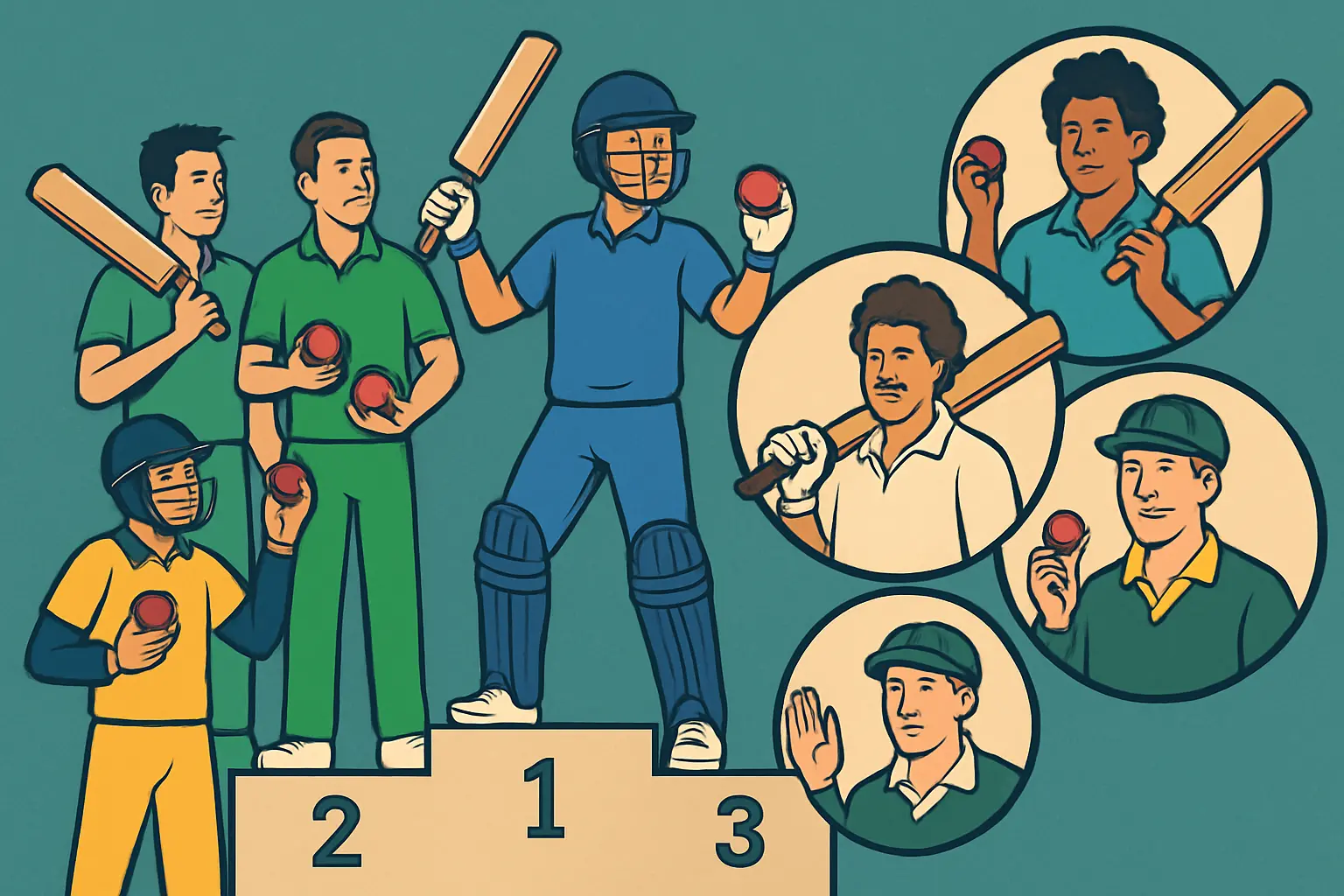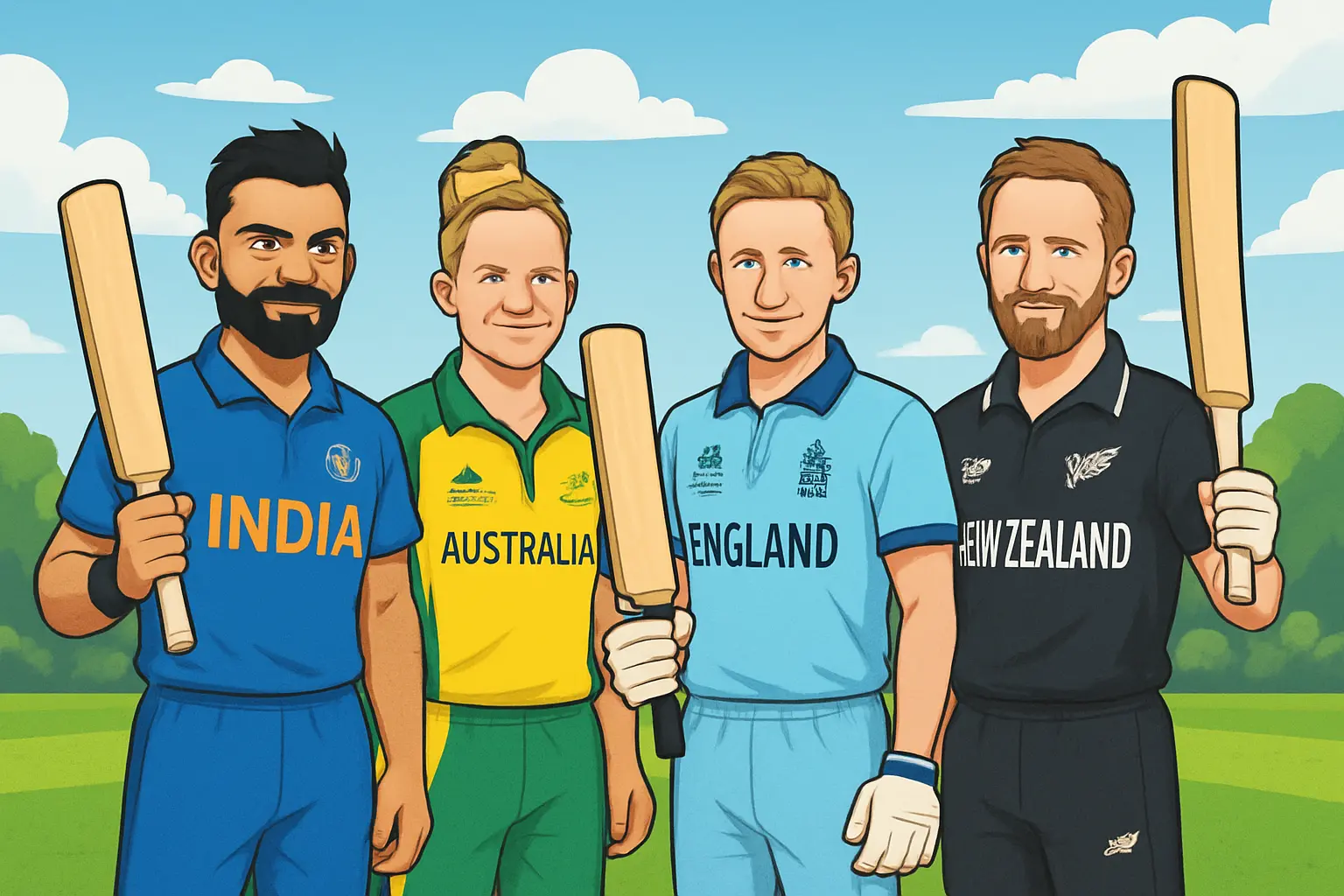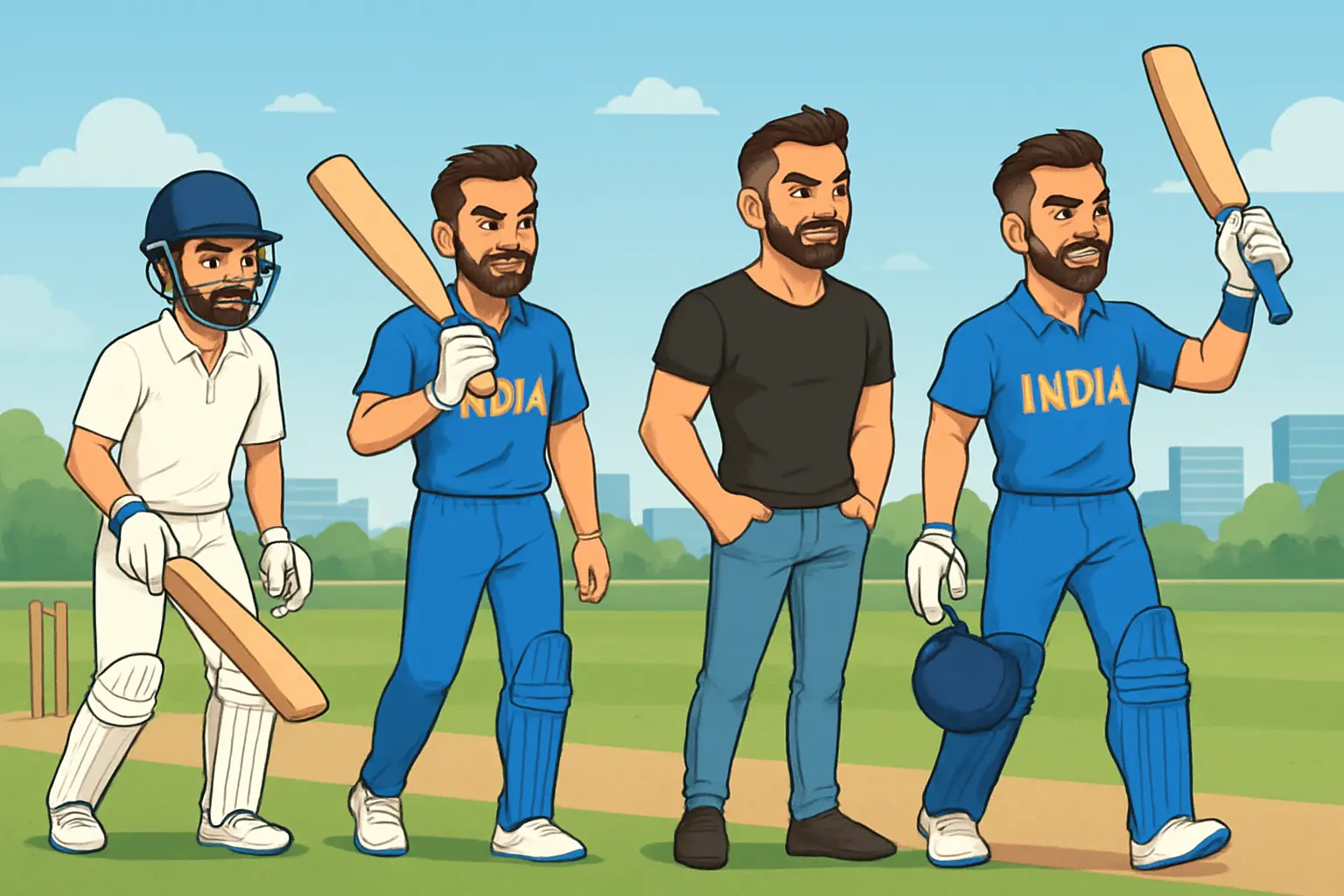Money loves stories. In the IPL, that story runs far beyond who lifts a trophy. It’s told in the thrum of a sold-out stadium, the confidence of a jersey sponsor, the price of a single 10-second ad, and the quiet line items on a franchise P&L. When people ask about the richest IPL team, they usually mean one of three things: which team is most valuable as a brand, which franchise commands the highest overall enterprise valuation, or which club pulls in the strongest revenues and profits right now. Each answer is valid—and different. This guide separates those threads, ranks the most valuable IPL teams, breaks down the revenue model, and explains how the business machine turns love of cricket into serious numbers.
What “richest IPL team” actually means
Richest can mean different things depending on the lens:
- Brand value: An independent estimate of what a team’s brand is worth as an intangible business asset. This measures reputation, fan equity, commercial strength, global pull, and the premium a brand can command. Brand Finance and Kroll (formerly Duff & Phelps) issue the two most cited reports.
- Franchise valuation (enterprise value): What the franchise would be worth in a sale—equity plus net debt. This is the number private equity and strategic buyers care about. It’s influenced by media rights cycles, market size, profitability, stadium deals, and scarcity.
- Revenue and profit: Money actually earned in a season and what’s left after costs. A team with moderate brand value can still be highly profitable if costs are tight and the market is efficient.
- Owner wealth: The net worth of the person or company that owns the franchise. This has almost nothing to do with the team’s standalone value, but it often enters the conversation because big owners can fund ambitious plays.
This article uses brand value for the headline richest ranking, then layers in franchise economics, revenue streams, and owner wealth to present a complete picture.
Most valuable IPL teams by brand value
The rankings below synthesize the latest publicly available figures and methodologies from Brand Finance and Kroll, cross-checked with disclosed sponsorships, audience metrics, and investor presentations. Brand values are shown as ranges to reflect methodological differences and ongoing commercial deals that update between official reports.
Table: Most valuable IPL teams by brand value (latest ranges)
- Chennai Super Kings (CSK) — Brand value: USD 200m+ range
- Why they lead: championships, extraordinary fan retention, stable leadership, and a home fortress that prints emotion. CSK is the cleanest example of consistent on-field success compounding brand equity.
- Royal Challengers Bengaluru (RCB) — Brand value: USD 180m–200m
- Why they thrive: unmatched digital heat, pan-India endorsement pull, and superstar magnetism. Few teams convert social buzz to sponsor value as efficiently as RCB.
- Mumbai Indians (MI) — Brand value: USD 180m–200m
- Why they stay elite: a sophisticated commercial engine, a polished global playbook, and multiple title runs embedded in recent memory. MI’s corporate governance and partner ecosystem are tier-one.
- Kolkata Knight Riders (KKR) — Brand value: USD 90m–120m
- Why they’re strong: Bollywood halo from ownership, a smart content factory, and a loyal East India base. KKR’s crossover appeal is a differentiator in brand conversations.
- Rajasthan Royals (RR) — Brand value: USD 80m–110m
- Why upwardly mobile: aggressive data-first cricket strategy, youth stories that resonate, and a fast-improving sponsor slate. RR’s “smart underdog” positioning has business teeth.
- Sunrisers Hyderabad (SRH) — Brand value: USD 70m–100m
- Why steady: consistent TV audiences from a major southern market, and a measured, corporate approach to sponsors.
- Delhi Capitals (DC) — Brand value: USD 70m–100m
- Why competitive: metro market scale, strong co-ownership pedigree, a young-core narrative, and premium urban inventory to sell.
- Gujarat Titans (GT) — Brand value: USD 60m–90m
- Why rising: instant impact on the field, extensive new-fan onboarding, and institutional backing. As a newer franchise, the base is smaller, but the trajectory is steep.
- Punjab Kings (PBKS) — Brand value: USD 50m–80m
- Why resilient: a distinctive brand voice, passionate regional following, and consistent sponsor interest without always translating to deep playoff runs.
- Lucknow Super Giants (LSG) — Brand value: USD 40m–70m
- Why building: high-demand home market, strong corporate owner, and a modern marketing toolkit. The ceiling is high as the fan base matures.
A quick note on movement within the pack:
- The top three—CSK, RCB, MI—are typically clustered; their order can shift with on-field results and headline sponsorships, but they remain in a league of their own for brand value.
- KKR often leads the next tier because of mainstream cultural reach.
- GT and LSG, as newer franchises, post faster percentage growth than mature brands even if absolute values lag for now.
Franchise valuation versus brand value
It’s vital to separate the brand number above from what a team might sell for. When two new franchises were auctioned into the league, the winning bids—RPSG Group for Lucknow and CVC Capital for Ahmedabad—recalibrated how investors price IPL franchises. Those auction prices were signals of enterprise value, not brand value.
A franchise’s enterprise valuation typically includes:
- Share of the central media rights pool flowing through the league
- Local sponsorship and ticketing prospects
- Stadium tenancy and hospitality control
- Market size, household incomes, and corporate base
- Visibility of profits over a multi-year horizon
- Scarcity and intangible benefits of owning a premium sports asset
In plain language: brand value is the glow; franchise valuation is the price tag; annual profit is the heart rate. They move together, but they’re not the same metric.
How IPL teams make money: the revenue model that powers valuations
IPL revenue has matured into a diversified stack. The mix varies by team, but a representative breakdown looks like this:
Table: Typical revenue mix for an IPL franchise (indicative share)
- Central media rights share: 45–55%
- Team sponsorships and licensing: 25–35%
- Ticketing and matchday hospitality: 10–15%
- Merchandising and digital products: 3–6%
- Prize money and miscellaneous: 2–5%
Central media rights share
A fixed portion of the league’s media-rights deal flows to franchises through the central pool. This is the lifeblood that underwrites rising valuations. Digital rights have exploded, reshaping the overall monetization picture and lifting the floor for every team’s annual income. When a rights cycle resets at a higher total value, team valuations reset with it.
Team sponsorships
The most visible chunk of a team’s own commerce:
- Front-of-jersey partner
- Chest and sleeve partners
- Helmet, cap, and trouser placements
- Training kit and practice partner inventory
- Category partnerships (banking, payments, beverages, automotive, telecom, fintech, fantasy, education, health)
Rates scale with audience reach, star power, and title contention. A top-three franchise can command a premium multiple over a mid-table brand for the same logo real estate.
Ticketing and hospitality
Home venues are not equal. Wankhede’s corporate boxes behave differently to Chepauk’s brazen, communal noise. Chinnaswamy’s sightlines and location make it a marketer’s dream. Stadium control matters: the more rights a team has over hospitality, F&B, and premium seating, the richer the matchday P&L. Dynamic pricing, weekday versus weekend games, and opponent draw also swing the gate.
Merchandise and IP
Much of IPL merchandising is still in adolescence compared to mature global leagues. That said, a few teams have cracked the code with signature chants, cultural cues, and smart collaborations. CSK’s “Whistle Podu” line is not just merchandise; it’s a language. RCB’s colorway has become lifestyle wear for fans who don’t need a ticket to feel part of the day.
Prize money and others
Prize money is a nice-to-have, not a valuation driver. Teams also monetize academy programs, content partnerships, and experiential IP in their city.
Do IPL teams make profit
Increasingly, yes. The step-up in digital rights value and the professionalization of sponsorship sales have pushed many clubs into healthy operating profit. The cost side matters: player salaries are capped for the squad, but staff costs, scouting systems, analytics groups, travel, marketing, and stadium payments are significant. Mature franchises boast attractive EBITDA margins during the season, though off-season costs and amortizations can dampen reported profit. Still, the investor community now treats an IPL franchise as a capital asset that throws off regular cash and appreciates over cycles.
Team-by-team valuation notes and commercial profiles
Chennai Super Kings (CSK) brand value and enterprise pull
- Ownership: Chennai Super Kings Cricket Limited, with legacy ties to India Cements.
- What drives brand value: continuity. Iconic leadership from the dugout to the pitch, a ritualistic home crowd, and a style of cricket built on clarity rather than chaos. In brand terms, CSK is trust and ritual.
- Sponsorships: high renewal rates and multi-season deals, with a bias toward consumer brands that want to convert southern heartland reach. Front-of-jersey rights regularly sit near the top of the league rate card.
- Growth levers: lifestyle extensions and community-led digital properties. CSK remains a case study in compounding: small edges added season after season.
Royal Challengers Bengaluru (RCB) brand value and commercial engine
- Ownership: United Spirits Limited (Diageo).
- What drives brand value: emotion at scale. RCB’s social footprint and video minutes consumed are elite. The presence of megastar talent has forged an identity that outlives results. In the IPL’s attention economy, RCB often leads per-match data.
- Sponsorships: an enviable stack of consumer tech, fintech, beverages, and new-economy brands. RCB sells aspiration and cool—rare commodities in sport that translate directly to pricing power.
- Growth levers: in-house content studios, women’s team synergy, and tech-forward fan experiences. RCB is one of the few sports brands in the region that thinks like a media company.
Mumbai Indians (MI) valuation and owner-driven sophistication
- Ownership: Reliance Industries via Indiawin Sports.
- What drives brand value: serial winners with corporate discipline. MI’s program design—scouting, development, sports science—feeds into an air of inevitability. Their brand is excellence with polish.
- Sponsorships: premium categories, multinational partners, and deep relationships that extend beyond a logo. MI turns partners into co-producers of content and experience, which raises lifetime value.
- Growth levers: global multi-club strategy across T20 leagues, data and performance IP, and cross-pollination of fan bases. MI is building a worldwide cricket portfolio; that halo reflects back on the IPL brand.
Kolkata Knight Riders (KKR) brand value and cultural crossovers
- Ownership: Red Chillies Entertainment, Mehta Group.
- What drives brand value: the bridge between cricket and pop culture. KKR’s owner visibility carries unique global resonance. The team leans into storytelling, music, and massy entertainment beats without losing sporting rigor.
- Sponsorships: strong inbound from categories seeking mass reach, movie tie-ins, and content-led integrations.
- Growth levers: bilingual content strategies and regional market expansions via academies and events.
Rajasthan Royals (RR) valuation and moneyball meets marketing
- Ownership: Emerging Media IPL and co-investors.
- What drives brand value: youth scouting and development, smart cricket, and a challenger brand tone that resonates with young fans. RR’s data-first aura is a commercial proposition in itself.
- Sponsorships: a mix of fast-growing consumer brands and international partners interested in an innovation narrative.
- Growth levers: path-to-pro academies, women’s cricket investment, and tech partnerships that elevate the analytics story.
Sunrisers Hyderabad (SRH) brand value and steady returns
- Ownership: Sun TV Network.
- What drives brand value: a clear southern identity backed by a media conglomerate. The product on the field is disciplined, which sponsors appreciate. SRH isn’t flash; it’s reliable reach.
- Sponsorships: stable roster, media-synergy categories, and good rates for southern markets.
- Growth levers: local language content scale-up and community activation in satellite cities.
Delhi Capitals (DC) valuation and metropolitan magnetism
- Ownership: JSW Group and GMR Group.
- What drives brand value: the capital’s corporate base, modern brand aesthetics, and a young, watchable core. DC presents as contemporary, urban, and tech-forward.
- Sponsorships: enterprise and new-economy categories that value Delhi-NCR’s purchasing power and policy visibility.
- Growth levers: business-to-business hospitality, premium seating products, and content tied to the city’s cultural calendar.
Gujarat Titans (GT) brand value and fast-tracked relevance
- Ownership: CVC Capital Partners.
- What drives brand value: immediate sporting credibility, a well-run front office, and the discipline of institutional investors. GT’s on-field output took fans from zero to emotionally invested very quickly.
- Sponsorships: attracted national and regional brands out of the gate; performance premium accelerated renewals.
- Growth levers: building an Ahmedabad-centered fandom and deepening merchandising to convert new supporter cohorts.
Punjab Kings (PBKS) brand value and resilient identity
- Ownership: KPH Dream Cricket Private Limited.
- What drives brand value: a loud, loyal community, a distinctive brand voice, and an underdog appeal that advertisers find relatable. PBKS has remained commercially relevant through reinventions.
- Sponsorships: strong presence of consumer staples and challenger brands seeking high visibility without premium-tier pricing.
- Growth levers: localized language content, regional retail partnerships, and in-stadium experiences that mirror Punjabi exuberance.
Lucknow Super Giants (LSG) valuation foundation and potential curve
- Ownership: RP-Sanjiv Goenka Group.
- What drives brand value: a heavy-duty corporate engine, a populous market, and modern brand architecture. LSG has the ingredients; time and continuity will synthesize them into premium pricing power.
- Sponsorships: well-structured from the start with good category diversity and long-term thinking.
- Growth levers: stadium experience innovations and grassroots cricket programs in Uttar Pradesh.
Sponsorship leaders among IPL teams
In logo rate cards and integrated content deals, the leaders are typically CSK, MI, and RCB, each commanding top-tier front-of-jersey and secondary placements. KKR often sits just below due to cultural reach, while DC, RR, and SRH craft hybrid packages tuned to their markets.
What sponsors pay for today:
- Cross-platform content featuring star players
- On-ground activations and hospitality for client entertaining
- Data-driven measurement, not just GRP-style exposure
- Regional language assets to match media consumption realities
- Always-on social narrative, not just in-season bursts
The most valuable IPL team depends on the metric, but the pecking order is anchored by which brand can keep a sponsor’s message in culture beyond match night.
Media rights and why the tide keeps rising
Every media-rights renegotiation resets the economics. Two structural shifts underpin the current era:
- Digital monetization has become the center of gravity. Streaming platforms can measure, target, and attribute in ways linear TV cannot. That precision justifies higher rights fees and richer ad products.
- The IPL window behaves like a national festival. Attention compresses into a finite period, which advertisers will pay top dollar to dominate. Scarcity meets scale.
For franchises, this means:
- A predictable and rising central pool share that can support bigger investments in support staff, analytics, and fan experience.
- Stronger negotiating power with local sponsors who see league-wide lift and want club-level community touch.
- The confidence to build multi-year plans without fearing a revenue cliff.
Cost controls and how winners protect margin
On the cost side, player salaries sit within a regulated purse, but competitive edges are won in everything around the purse:
- Scouting: building proprietary networks and data systems to source domestic talent before rivals.
- Performance: strength, conditioning, and recovery programs that protect availability and extend peaks.
- Coaching: blending experience and adaptability to modern T20 trends—not easy to quantify, but tangible on the field.
- Content: in-house production teams that reduce outsourced cost and increase speed-to-market for sponsor deliverables.
- Ticketing ops: dynamic pricing, segmentation, and hospitality products that boost yield per seat.
A franchise that masters these levers can widen its operating margin even if top line growth plateaus for a cycle.
CSK vs MI brand value and RCB’s digital power
On pure brand value, CSK has recently held a slight edge due to a consistency narrative that advertisers love. MI is the archetype of modern success, which resonates with blue-chip partners and global crossovers. RCB punches like a heavyweight in digital reach and fandom intensity; the sponsor proposition there is engagement over frequency. When a sponsor wants heat, the RCB conversation lights up; when it wants reassurance, CSK and MI come to the table with a trophy-backed aura. In a valuation room, all three get premium treatment; the relative order can swing depending on the brief.
Are newer franchises among the richest
On enterprise valuation, the answer is promising: the entry fees bid by LSG and GT set a high floor for what these assets are worth. On brand value, they’re still building. Speed of ascent relies on staying competitive, locking in long-term sponsors, tight-fisted cost management, and converting regional pride into national relevance. Newer teams often see the fastest percentage lifts from a small base, which is catnip for investors who care about growth curves.
Richest IPL owners and the ownership landscape
Owner net worth isn’t the same as team worth, but it does shape how a club behaves.
- Reliance Industries (Mumbai Indians): One of Asia’s most valuable companies. Vast capital base, world-class execution. Ownership gives MI credibility in corporate suites and access to a best-in-class operations backbone.
- Shah Rukh Khan/Red Chillies Entertainment (Kolkata Knight Riders): A global brand by himself, SRK’s star power translates into reach, crossover content, and a constant top-of-mind presence. The owner brand is a multiplier for KKR’s sponsor narrative.
- RP-Sanjiv Goenka Group (Lucknow Super Giants): A diversified conglomerate with deep experience in consumer businesses. Brings financial firepower and operational systems.
- Sun TV Network (Sunrisers Hyderabad): A media titan with strong southern resonance. Synergies between network and team help with distribution and audience building.
- JSW Group and GMR Group (Delhi Capitals): Heavy industry and infrastructure giants pairing scale, government relations, and project management expertise.
- United Spirits/Diageo (Royal Challengers Bengaluru): Global beverage major with structured governance and brand-building chops.
- CVC Capital (Gujarat Titans): One of the world’s significant private equity investors. Professionalized governance, return discipline, and global portfolio synergies.
- Chennai Super Kings Cricket Limited (Chennai Super Kings): Publicly listed company after demerger lineage; institutional stewardship; widespread retail investor interest.
- KPH Dream Cricket (Punjab Kings) and Emerging Media (Rajasthan Royals): Entrepreneurial ownership with an eye for sport-led IP and long-term value creation.
Owner wealth enables multi-club strategies, academy investments, state-of-the-art training environments, and content factories that keep fans engaged. It doesn’t ensure on-field results, but it often correlates with systems that keep a team in the valuation top tier.
How IPL team valuation is calculated
Two reputable approaches dominate public discourse:
- Brand Finance: Uses the royalty-relief method. Estimate the brand’s strength across factors like familiarity, consideration, preference, governance, and commercial performance; apply a notional royalty rate that a company would pay to license the brand; discount future royalties to present value. Output: brand value as an intangible asset worth.
- Kroll (Duff & Phelps): A hybrid model that triangulates brand strength, enterprise performance, and market factors to arrive at brand value estimates; historically the first to popularize IPL brand valuation reporting.
Franchise valuation in investor settings leans on:
- Discounted cash flows from expected central pool and team revenues
- Comparable sales (including expansion fees paid for new teams)
- Application of revenue multiples based on growth, margin, and market risk
- Sensitivity to media-rights cycles and stadium economics
Revenue proof points that push valuations up:
- Multi-year front-of-jersey deals with premium brands
- High occupancy and price realization for hospitality
- Deep regional sponsor stack (not just one or two whales)
- Tangible digital conversion (shop, memberships, paid content)
A sample P&L for a mid-to-top IPL team
The exact numbers vary, but the structure offers a sense of where the game is won.
Revenue
- Central pool share: the largest single inflow
- Sponsorships: front-of-jersey anchor, plus 15–25 category partners
- Ticketing: average yield enhanced by corporate boxes
- Merchandise: growing but still a small slice
Costs
- Player salaries (purse): regulated cap for the squad, plus retention adjustments
- Support staff: coaching, analytics, medical, logistics
- Matchday operations: rent, security, F&B partners, temporary infrastructure
- Travel and accommodation: concentrated in-season
- Marketing and content: production costs, distribution, fan engagement tech
- Administration: overheads, compliance, audit
Profitability
- Many franchises now report healthy operating profit during the season, aided by the central pool uplift and high sponsor renewal rates.
Sabse ameer IPL team explained
“IPL ki sabse ameer team kaun si hai” tends to be answered with CSK, RCB, or MI depending on whether the focus is brand value, revenue power, or recent silverware. For most fans and sponsors, the richest IPL team means the most valuable IPL team by brand value—where CSK has recently held a slim edge, with RCB and MI shoulder to shoulder.
Why some teams sell more sponsorship than they “should”
Two patterns consistently break models:
- Star power that transcends team performance. One bank’s CMO told me an RCB collaboration pulsed more sharply on brand-lift studies than other options, even when league tables didn’t favor them. That heat is priced in.
- Cultural relevance driven by owner presence. KKR’s ability to insert a sponsor’s message into entertainment media cycles is unique. Media value isn’t just about minutes; it’s about meaning.
Ticketing economics: not all seats are equal
- Wankhede, Mumbai: corporate demand buoyant, per-seat yields high; weekday matches still sell premium.
- Chepauk, Chennai: community and ritual; high retention among season-ticket buyers; volume with emotion.
- Chinnaswamy, Bengaluru: location and urban vibe; premium hospitality is a growth engine when productized well.
- Newer stadiums: opportunities to engineer hospitality from the blueprint stage, creating recurring, high-margin product.
Merchandise: why it matters for valuation even if small
- Signal of affinity: every jersey sold is a self-funded billboard. It also becomes a dataset—a way to identify and nurture superfans.
- Product extensions: collaborations with streetwear, retro drops, or cause-led collections create cultural capital that keeps the brand walking even in the off-season.
- Direct-to-fan: e-commerce conversion and CRM programs turn fans into customers for multiple products over time.
Comparisons that matter to investors
- CSK vs MI: Both sit at the apex; CSK has a cult powered by continuity; MI has systematized success and global club synergies. In a boardroom, you choose between inevitability and polish—both command premium multiples.
- RCB vs CSK valuation: RCB’s engagement machine and superstar narrative can, in certain sponsor categories, rival or exceed CSK brand activations. On overall brand value, CSK has tracked slightly higher in recent independent estimates; enterprise valuation compresses the gap because of market strength in Bengaluru and the quality of RCB’s commercial team.
- MI vs KKR revenue: MI’s corporate ecosystem and multi-club strategy create layered revenue and capability stack; KKR’s crossover power gives unique reach. For pure cash in the door, MI typically outruns; for media influence per rupee, KKR often over-performs.
Most valuable cricket franchises beyond the IPL
Even in a global context, IPL franchises now sit among the most valuable cricket teams on earth. Comparative conversations increasingly place top IPL teams alongside mid-tier franchises in major American leagues by revenue multiples, particularly when growth trajectories are factored in. The IPL has, in effect, built one of the most investable properties in world sport within a concentrated window.
What shifts valuations up or down in a hurry
Upward drivers:
- Media rights step-up
- Deep playoff runs with high TV ratings
- Superstar acquisition or breakout domestic talent
- New stadium rights or hospitality upgrades
- Long-term anchor sponsor renewals with escalators
Downward pressures:
- Prolonged on-field underperformance
- Sponsor churn, especially at the anchor level
- Governance issues that spook corporate buyers
- Stadium access uncertainties
- Macro shifts that hit discretionary ad spend
Fan equity and why it’s the true moat
Brand valuation models try to quantify something every fan knows: it’s different when a team becomes part of your life. The IPL’s marketing superpower is that it invites fans to bring their identity—city pride, language, music, food—into the stadium. Teams that harness that energy with respect, not exploitation, tend to build stronger, more defensible brands. In cold numbers, that shows up as higher sponsor conversion, richer ticket yields, and more resilient revenues in soft seasons.
Richest IPL team vs richest IPL owner
This distinction is worth underlining:
- Richest IPL team refers to the most valuable IPL team—usually by brand value or enterprise valuation.
- Richest IPL owner refers to the personal or corporate net worth of the owner. Mukesh Ambani sits in a different wealth universe from almost any team owner worldwide; that doesn’t mean MI’s franchise value is the highest by default. Team value is earned in the market.
Brand value and the road ahead
The league’s macro tailwinds remain robust: growing digital penetration, advertiser hunger for reliable mass moments, and India’s household income curve. For teams, the job is execution:
- Professionalize sales and measurement to lock in premium partners
- Build year-round content IP so attention doesn’t disappear in the off-season
- Invest in data and high-performance to produce on-field stories fans will pay to watch
- Treat the stadium like an entertainment district, not a real-estate cost
Methodology and sources for IPL team valuation
This analysis leans on:
- Brand Finance IPL Brand Valuation reports using the royalty-relief method and brand strength indices across familiarity, consideration, preference, and governance.
- Kroll (Duff & Phelps) IPL brand valuation benchmarks across team equity, market reach, and commercial performance.
- Public disclosures from franchise owners, sponsor announcements, and credible business media.
- Observed sponsor pricing, renewal trends, content performance, and matchday economics across multiple seasons.
A glossary for clean conversations
- Brand value:
- The present value of future earnings attributable to the brand, calculated as what you’d pay in royalties to license it if you didn’t own it.
- Enterprise value (franchise valuation):
- Equity value plus debt minus cash; what the whole business might sell for.
- Net worth (owner):
- Wealth of the owner; not directly the team’s valuation.
- Revenue:
- Money earned from media share, sponsorships, ticketing, etc.
- EBITDA:
- Earnings before interest, tax, depreciation, and amortization; a proxy for operating performance.
- Central pool:
- The league’s collective revenues, largely from media rights and league-level sponsorships, shared with teams via a formula.
Fast facts on the richest and most valuable IPL teams
- CSK, RCB, and MI form the top tier of brand value; order can shift with titles, sponsorships, and cultural heat.
- KKR leads the second tier on the back of crossover entertainment power.
- GT and LSG are rising quickly on percentage growth; their enterprise valuations started high due to entry bids.
- Most franchises are now operating-profit positive in-season, supported by central media-rights income.
- Owner wealth is not a proxy for franchise value, but strong owners tend to build strong systems, which drive value over time.
Practical takeaways for brands and investors
- For maximum cultural resonance, the top tier—CSK, RCB, MI—justifies premium spends. Expect multi-platform commitments and content co-creation.
- For efficient reach with strong storytelling, KKR, RR, and DC deliver excellent value. They sell identity with modern presentation.
- For growth bets with upside, GT and LSG offer rising curves and institutional discipline.
- Regional depth plays are best with SRH and PBKS, where category exclusivity in local markets can out-punch national buys.
Richest IPL team, simplified
If the yardstick is brand value, Chennai Super Kings typically sit on top, with Royal Challengers Bengaluru and Mumbai Indians right there in the slip cordon. If the lens is enterprise valuation, all three are blue-chip assets, with institutional buyers likely to assign tight ranges depending on their model assumptions. If you chase pure commercial torque this minute—sponsorship heat, digital presence, and emotional muscle—RCB’s engagement factory is as strong as it gets. The truth is that the IPL’s richest conversation is now a three-horse race, with KKR pushing the lead group from just behind.
The beauty of this league lies in how fast momentum can change. One clutch signing, one season of flawless execution, one piece of content that cracks culture, and the center of gravity shifts. That fluidity keeps fans leaning forward and keeps analysts honest.
Final word
The IPL started as a cricket league and became a business class in motion. The richest IPL team isn’t simply the one with the fattest sponsor deck or the loudest stadium; it’s the club that can turn attention into economics with relentless regularity. Right now, three badges—yellow, blue, and red—set the standard for most valuable IPL team status. But this market rewards courage, craft, and care for the fan. Those who get all three right will keep climbing the valuation ladder, season after season, while the rest relearn a hard lesson of sport and business: winning hearts is the most defensible balance-sheet advantage there is.







